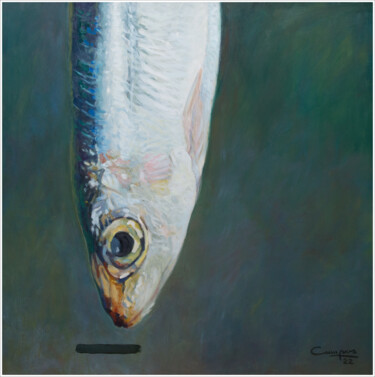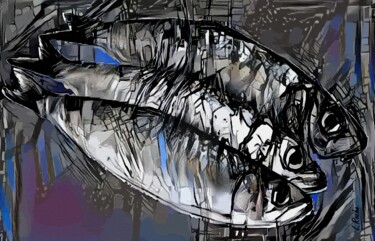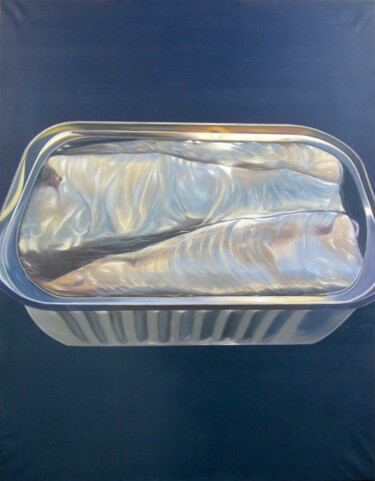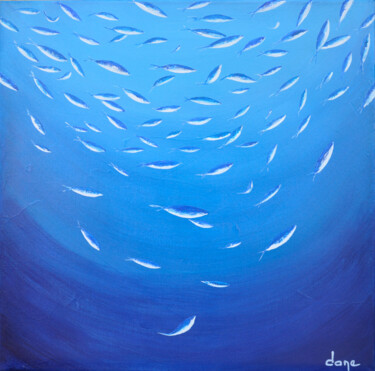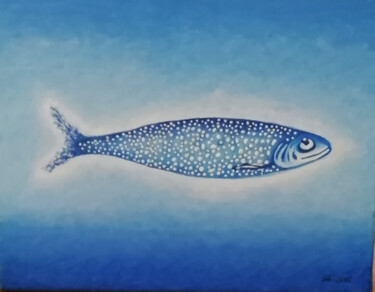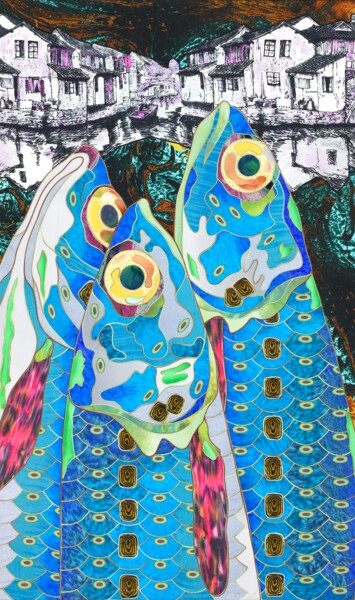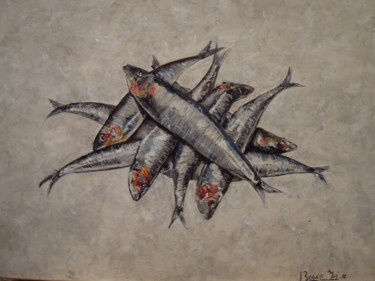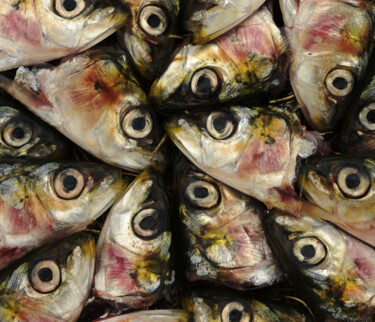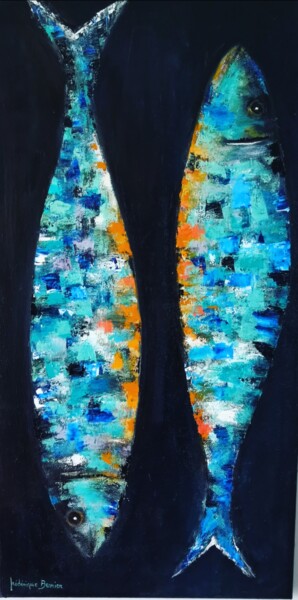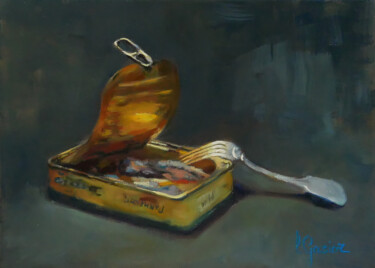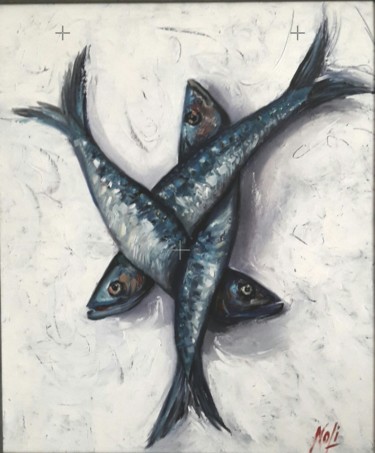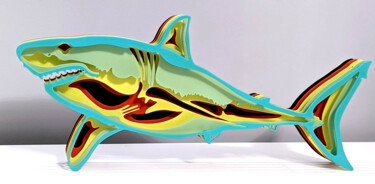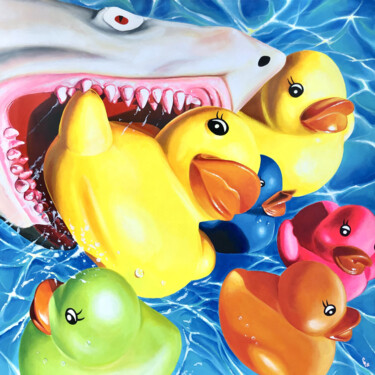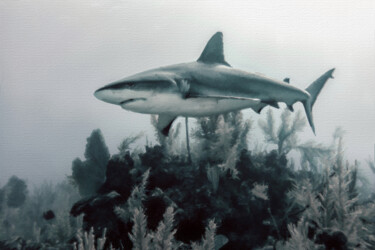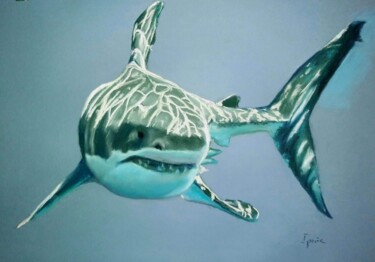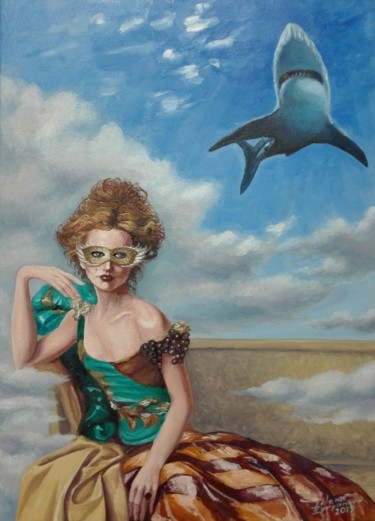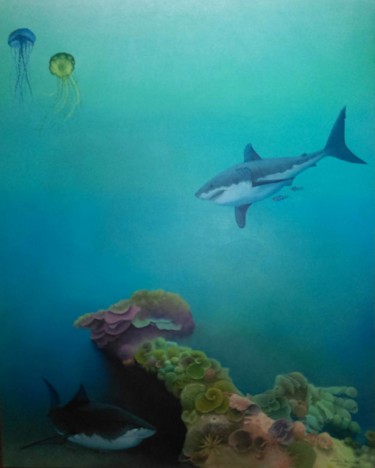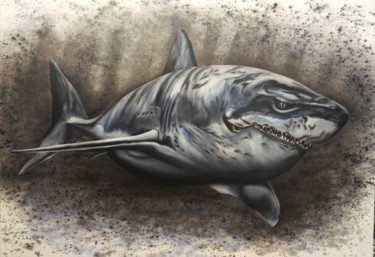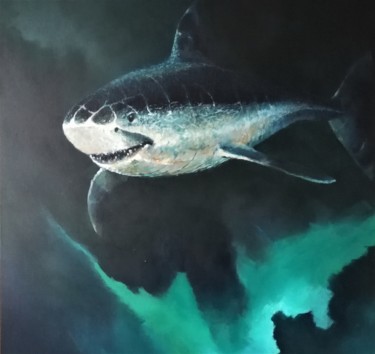 Daisy Van Der Zijden, The great white shark art prints, 2020. Pencil / pastel on paper, 29.7 x 21 cm.
Daisy Van Der Zijden, The great white shark art prints, 2020. Pencil / pastel on paper, 29.7 x 21 cm.
The metaphorical significance of the shark
The shark is a cartilaginous fish, which, belonging to the vast order Selachimorpha, represents a true veteran of the seas and oceans, as it has inhabited these expanses of salt water for about four hundred million years, that is, even before the advent of dinosaurs. This predator is distinguished from other denizens of the sea by iconic peculiarities: its medium to large size, its first dorsal fin, its sharp elongated snout, and its fearsome mouth, adorned with fifteen rows of teeth in each jaw. It is precisely these features that have turned the said fish into a "fearsome" symbol of strength, courage, energy, determination and action, but also of safeguarding one's resources. In fact, regarding the latter point, it is good to highlight how the animal's different rows of teeth are used sparingly, as the fish uses only one at a time, which cyclically changes with those behind it. Metaphorically speaking, such an attitude invites one not to dissipate one's energy and to remain focused on a goal until it is accomplished. Consequently, this animal, often exclusively perceived as frightening and dangerous, turns out to be a good example of conduct, aimed at positively and responsibly inspiring our approach to life. In addition, it is worth noting that the predator is only capable of swimming forward, a peculiarity that symbolizes a discrete resilience, intended to invite us to act swiftly, firmly and resolutely despite difficulties, creating our own opportunities.
 Elmar Magerram, Ocean kinetics, 2022. Engravings, digital print on paper, 60 x 63 cm.
Elmar Magerram, Ocean kinetics, 2022. Engravings, digital print on paper, 60 x 63 cm.
 Yann Comtat, Sharks, 2022. Acrylic on wood, 90 x 190 cm.
Yann Comtat, Sharks, 2022. Acrylic on wood, 90 x 190 cm.
The shark in ancient and medieval art
Sharks have dominated the waters of the sea for hundreds of thousands of years before man, who, once having ploughed them, has oftentimes described these animals, both in artistic and literary works, also presenting them as dangerous and fearsome predators. One of the oldest written accounts in this regard is offered to us by Herodotus in 491 B.C., which, account of the storm that sank some three hundred Greek ships involved in the first invasion of Persia, describes the sharks as ravenous sea monsters ready to devour as many of the Marians as possible who fell overboard. Such a tale also seems to be told through images, in particular by one of the earliest figurative representations of the aforementioned animal species, immortalized on an 8th-century B.C.E. ceramic bowl, which, found on the Island of Ischia (Italy), shows sailors fighting with a large sea creature, likely to be associated with a great white shark. Next noteworthy find is a mosaic dating from the 2nd century B.C., namely, a marine with fish, which, preserved at the National Archaeological Museum in Naples, includes the figures of a dogfish and a torpedo, small types of sharks inhabiting the Mediterranean Sea.
 Polychrome floor mosaic, IV. Basilica of Santa Maria Assunta: Aquileia.
Polychrome floor mosaic, IV. Basilica of Santa Maria Assunta: Aquileia.
 Illustration on parchment of the History and True Novel of the Duke of Lyon de Bourges, 16th century. National Library of France: Paris
Illustration on parchment of the History and True Novel of the Duke of Lyon de Bourges, 16th century. National Library of France: Paris
Speaking instead of first-century B.C.E. literature, sharks reappear numerous to haunt the Mediterranean within La Naturalis historia, a treatise by Pliny the Elder in which the frightening interaction between the aforementioned fish and the humans of the time was described with great precision. The recurrence of encounters between the aforementioned species is reconfirmed by a polychrome floor mosaic from the Fourth, which, found inside the Basilica of Santa Maria Assunta in Aquileia, immortalizes, among various specimens of fish, a torpedo. Speaking, on the other hand, of the medieval period, the impetuous relationship between humans and sharks is well rendered by an illustration on parchment of the History and True Romance of the Duke of Lyon de Bourges (16th century), an epic poem preserved at the National Library of France, Paris. In fact, the miniature in question well illustrates the superstitious predatory conception of the time, according to which sharks were seen as a kind of devils of the seas, ready to hinder the crusaders' advance toward the Holy Land.
 Tony Rubino, Shark under water, 2022. Acrylic / digital print on canvas, 40.6 x 61 cm.
Tony Rubino, Shark under water, 2022. Acrylic / digital print on canvas, 40.6 x 61 cm.
 Pierre Lamblin, Sharkypopv5, 2022. Acrylic / airbrush on aluminum, 23 x 48 cm.
Pierre Lamblin, Sharkypopv5, 2022. Acrylic / airbrush on aluminum, 23 x 48 cm.
The shark in modern and contemporary art
The history of sharks in art continues through the centuries with great vigor, as evidenced by some masterpieces chronologically placed between the dawn of the modern and contemporary ages, such as: John Singleton Copley's Watson and the Shark (1778), Winslow Homer's The Gulf Stream (1899/1906), John Buckley's The Headington Shark (Untitled) 1986, Damien Hirst's The Physical Impossibility of Death in the Mind of Someone Living (1991), and Michael Muller's Sharks (2016). The figurative research of these iconic works, aimed at investigating the aforementioned animals with styles, colors, viewpoints, and techniques and always different, is also carried on by the work of Artmajeur artists, as evidenced by the works of Frank Kortan, Jean-Michel Garino, and Christian Lucas.
 Frank Kortan, Yellow shark, 2016. Oil on Wood, 70 x 60 cm.
Frank Kortan, Yellow shark, 2016. Oil on Wood, 70 x 60 cm.
Frank Kortan: Yellow shark
Looking carefully at the wealth of detail in Frank Kortan's surrealist painting, we try, almost spontaneously, to find reasons why the legendary Frank Zappa, the iconic American guitarist portrayed in the work, is surrounded by animate and inanimate beings, overlapping on his hat, an accessory that turns out to be extremely ironic and, at the same time, a bit overloaded and confusing. Still on the subject of the artist effigy, his portrait makes explicit reference to an iconic photo taken by Michael Ochs, who immortalized him in Los Angeles in March 1979 wearing a stars-and-stripes top hat. Within this strange and articulated context, the subject of our interest, namely the yellow shark, is found occupying the highest point of the top hat cover worn by the rocker, representing a kind of climax of the absurd. Speaking instead of art history, another famous surreal shark is Shark in my bathtub (2011) made by Peter Saul, an iconic American artist born in 1934 connected with Pop Art, Surrealism and Expressionism.
 Christian Lucas, No swimming allowed, 2021. Acrylic on canvas, 100 x 100 cm.
Christian Lucas, No swimming allowed, 2021. Acrylic on canvas, 100 x 100 cm.
Christian Lucas: No swimming allowed
The ironic realism of Christian Lucas's painting powerfully immortalizes all the aggressiveness of a shark, which imaginatively spills over inanimate and, consequently inexpressive and "swaggering," plastic ducks, immune to any sort of terror. Just as anticipated, the history of art is full of examples of aggressive sharks and, especially, of works depicting these open-mouthed predators, probably pursuing the purpose, both to "scare" the viewer, and to show all the fearsome power of the said animal. A well-known example of the genre is certainly Untitled (Bruce) (2014) by Robert Longo, an American artist, filmmaker, photographer and musician born in 1953. The great white shark is one of the central themes of the master's photorealistic charcoal drawings, part of the Perfect Gods series, in which Longo draws the iconic motif with a gaping jaw and sharp, protruding teeth of disproportionate size. Finally, with its immense physical and plastic presence, the work achieves an almost sculptural appeal, becoming the ultimate symbol of terror.
 Jean-Michel Garino, Shark one, 2020. Sculpture on stone, 28 x 34 x 12 / 4.00 kg.
Jean-Michel Garino, Shark one, 2020. Sculpture on stone, 28 x 34 x 12 / 4.00 kg.
Jean-Michel Garino: Shark one
Jean-Michel Garino's statue, carved from a block of yellow Provence marble, depicts a shark, a subject that proves to be totally in line with the French artist's figurative investigation, predominantly focused on the animal world, captured in all its beauty, symbolism and realism. In fact, the blocks are carved in total respect of the peculiarities of the specimens, through refined and elegant forms, which are maximally enhanced by the luminosity of the material. Speaking of art history, one of the oldest shark sculptures is preserved at the MET in New York, namely Shark, a 1st-5th century work resulting from the artistic production of the pre-Columbian Tolita-Tumaco culture.

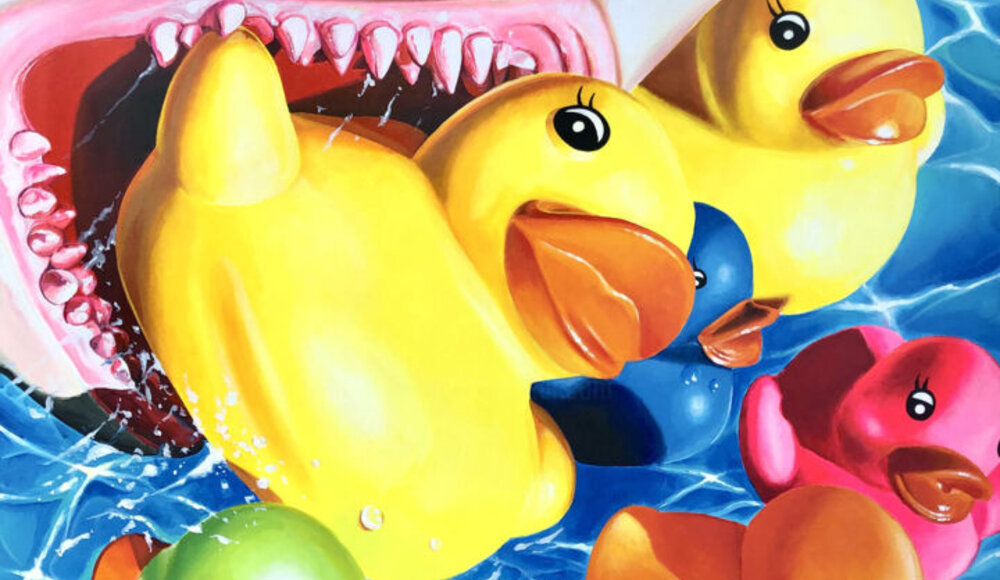
 Olimpia Gaia Martinelli
Olimpia Gaia Martinelli
